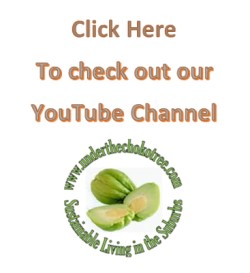I have somewhere around 2600 books in my office area alone so when I decided to put this list together, I knew that it would require some work, not because I would have trouble coming up with fifteen books that inspired me, but because I have been able to read so many amazing books over the years. My original idea was to generate a list of books that inspired me, but when it came to it, it would be too long and too difficult to manage, so I arbitrarily decided to set the number at fifteen (originally it was twelve). That way I would not have to spend the rest of my life compiling an article that I would never publish. So here they are, in no particular order –
The Survival Handbook: Self Sufficiency for Everyone – Michael Allaby et. al -Macmillan London Ltd (UK) 1977 ISBN 0 330 24813 8 – This book has seven chapters: Land, food, textiles, buildings, energy, crafts and community. It was one of my first books in the ‘self sufficiency’ genre, back when I was in my late teens and introduced me to so many (for me) new concepts. It is based on the UK experience of course and I still remember the weird looks I got when I walked into a Health food shop to enquire about a grain grinder back in the ‘70s, but it set the scene for so many things in my life.
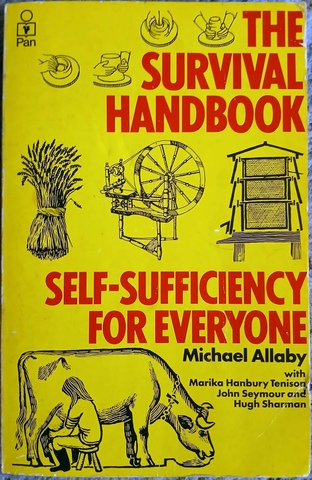
Backyard Self-Sufficiency – Jacki French -Aird Books (AUS) 1992 ISBN 978 0 947214 58 6 – This is the book for those who want to have a go at being self-sufficient. It has ten chapters, including planning the self-sufficient garden; growing staples; veg all year round; fruit for all seasons; overcoming heat, frost and drought; scavenging the suburbs; small animals for small gardens; keeping the surplus; the backyard supermarket and a house for self-sufficiency. By this stage (early ‘90s) I had done the Farm Technology course at TAFE and practiced lots of ideas our back yard, and thought that I knew a thing or two about backyard self-sufficiency. Jackie taught me how much I had yet to learn! This book still takes pride of place in my library.
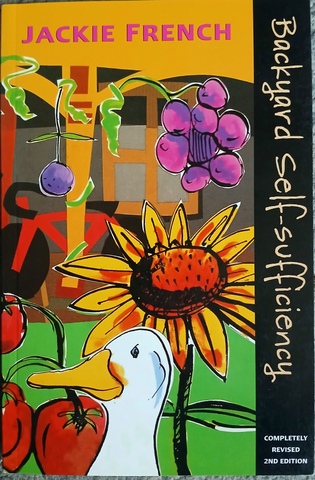
The Permaculture Home Garden – Linda Woodrow – Penguin Books Australia (AUS) 1996 ISBN 0 670 86599 0 – I picked up my copy of this book in a second-hand bookshop (sorry Linda) in Perth and it really opened my eyes to the possibility of set up a much simplified version of this system in our back yard. The book has five parts: part one is ‘Tools’ which is about gathering the resources and planning to set things up, Part two is ‘Starting Out’ and talks about the site and layout, building your chook dome, composting and worm farming. Part three is ‘Planting’ designing and setting out your system, plant propagation and a yearly planting guide, Part four ‘Maintaining the Garden’ and is about dealing with pests (including humans) and diseases, weeding and watering. Part five is an A to Z giving specific information on plants to be included in your guilds. When I read this book, it opened up the world of the chook tractor for me and how I could use it as a tool to cultivate, clear and fertilise our fourteen veggie patches, one after the other reducing my work considerably. And you get eggs! Here it is 20 years later, and the system is still working beautifully.
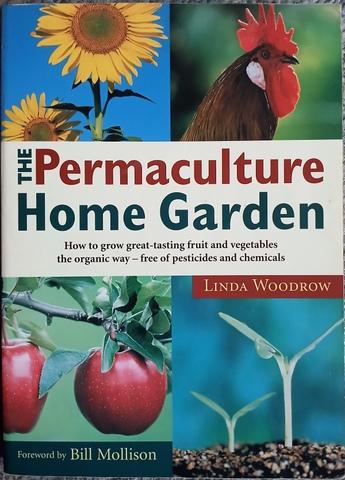
The Integral Urban House – The Farallones Institute – Sierra Club Books (US) 1979 ISBN 0 87156 213 8 – This is a big book, almost A4 size and close to 500 pages! With such a vast amount of data, it is a bit difficult to summarise, but here we go! The book has four parts: part one ‘the concept’ talks about the origins and design process for the Integral Urban House, part two ‘conserving energy and resources’ discusses how they managed energy conservation, water conservation and wastes in the house. Part three ‘using the sun’s energy’ discusses how they used small urban spaces to grow food and raise livestock as well as implementing solar technology to heat space and water, part four ‘the interfaces’ talks about how they managed wildlife (including the human variety) and relationships with the house, the street and the neighbourhood. It has taught me so much and the reality is that even today, after it being in my library for over 30 years I can still flip through it and be surprised, learning something new each time!
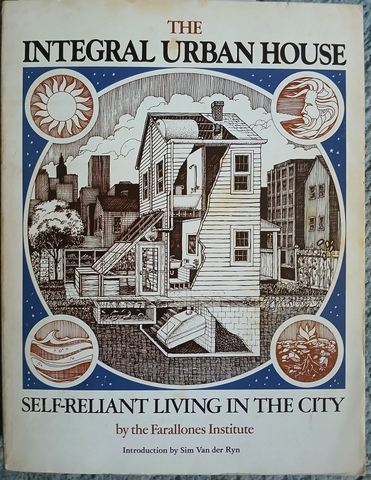
Cooking with the Sun – Beth & Dan Halacy – Morning Sun Press (US) 1992 ISBN 0 9629069 2 1 - This book covers some history then gives detailed instructions on building a solar oven and a parabolic solar cooker. The rest of the book is given over to recipes appropriate for use in solar cookers. It has some black and white photos and some line drawings to illustrate construction methods. The book responsible for my interest in solar cooking and the plans in the book are what I based my solar oven on after I had fooled around with some simple cardboard designs and decided to get serious. I also made the parabolic solar cooker and used both to cook for many years, although only the solar oven is currently in existence, and is being refurbished.
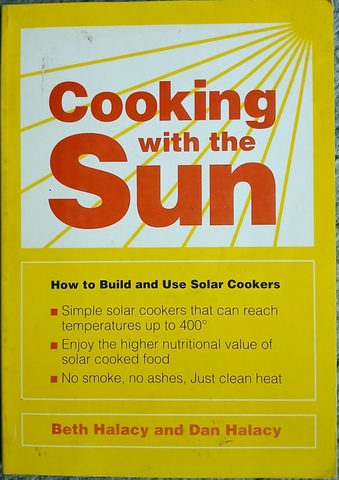
Gardening with Less Water – David A. Bainbridge – Storey Publishing (US) 2015 ISBN 978 1 61212 582 4 – This is not a big book, but it is chock full of techniques we all should be using. Part 1 of the book covers the techniques: buried clay pots, porous capsules, deep pipes, wicks, porous hose, buried clay pipe and tree shelters. Part 2 is about taking it to the next level and covers water-wise gardening tips, rainwater harvesting, landscaping for water catchment and developing a plan. If you are concerned about the water used in your garden, you need this book in your library. The book has lots of colour sketches and colour photos. I came upon this in a bookshop in town a few years ago. While I had experience with efficient irrigation in the form of from-scratch and commercial pot base ollas it opened my eyes to several other techniques that I have been able to integrate into our growing systems. This has had the effect of making us more drought tolerant and water efficient.

RetroSuburbia – David Holmgren – Melliodora Publishing (AUS) 2018 ISBN 978 0 9943928 7 9 – This is also a big book, with a slightly smaller than A4 format and almost 600 pages. It is a vast amount of information and knowledge that I won’t attempt to summarise here. It is sufficient to say that while I had read Permaculture I and II and a good bit of Bills Designers’ Manual, I found that RetroSuburbia did an amazing job of making permaculture applicable to the space that I was interested in – suburbia. It is the sort of book that you can find something new in every time you open it. It certainly rekindled my enthusiasm for working on our place to improve the sustainability of our lifestyle.
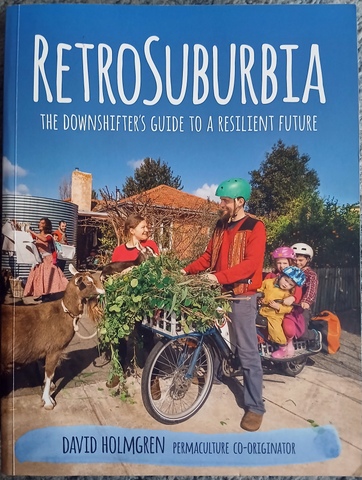
Wild Herbs of Australia and New Zealand – Tim Low – Angus and Robertson (AUS) 1991 ISBN 0207170010 – This is THE book for wild herbs as far as I am concerned so get hold of it if you can! Even if you are not in Australia or NZ this is still a useful book because most of the plants covered are European or American imports anyway. It covers a mind-boggling array of plants from dandelion, shepherds purse and cobblers pegs to the cresses, wild radish and fathen. Each monograph covers how to identify the plant (including line drawings) what similar plants exist that it could be confused with and how to use it. From the first time I read it, it has had an impact on our diet and allowed me to understand and identify plants which we previously regarded as weeds and which we now look on as food.
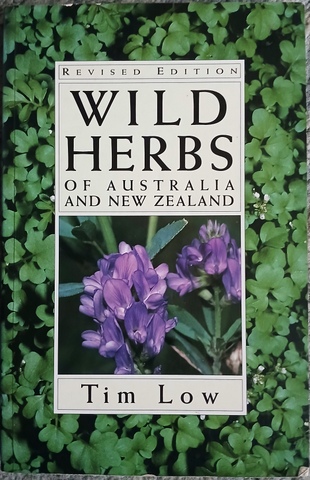
The Permaculture City – Toby Hemenway – Chelsea Green Publishing (US) 2015 ISBN 978 1 60358 527 9 – This book is broken up into ten sections – The surprisingly green city; permaculture design with an urban twist; designing the urban home garden; techniques for the urban home garden; strategies for gardening in community; water wisdom, metropolitan style; energy solutions for home and communities; livelihood, real wealth and becoming valuable; placemaking and the empowered community and tools for designing resilient cities. I found so much great material on using the zone tool in urban areas, urban microclimates, setting up the four levels of design process for the Choko Tree and putting together strategies and techniques to achieve what is on our plan.
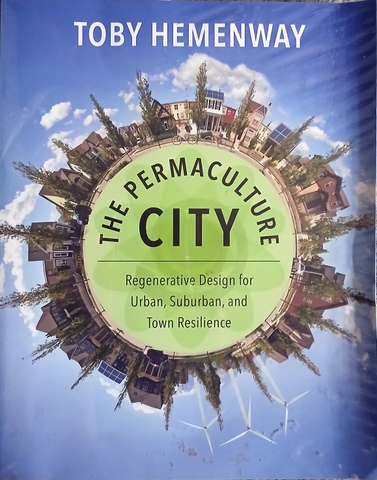
Wind and Wind Spinners – Michael Hackleman – Peace Press (US) 1974 ISBN 0 915238 02 0 – This was another watershed text for me, all about making a wind generator using automotive components and catching the wind with a vertical shaft savonius (S) rotor. The theory and practice are all here, including how to make and secure the tower that the generator sits on. While the wind turbine approach didn’t work in our suburban context (took me many years to work that out, I really WANTED a wind turbine!) This book provided all basics that allowed me to put together and run the 12 volt system through the house to power the lights and the fridge. I just wound up using solar panels for our system that made much more sense in our suburban context.
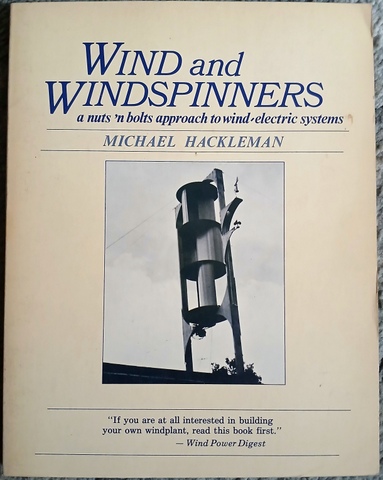
The Milkwood Permaculture Living Handbook – Kirsten Bradley – Murdoch Books (AUS) 2023 ISBN 978 1 92235 192 0 – This book is about putting new habits in place to “create a more meaningful life for you and a better world”. The book takes the twelve Permaculture design principles and provides five habits for each one. Each habit is practical, doable, educative and helps you create that ‘more meaningful life’. What inspires me about this book is the relentless practicality of it. It is a book not about theory, but about doing things. Doing things to make your life, and the world, a better place.
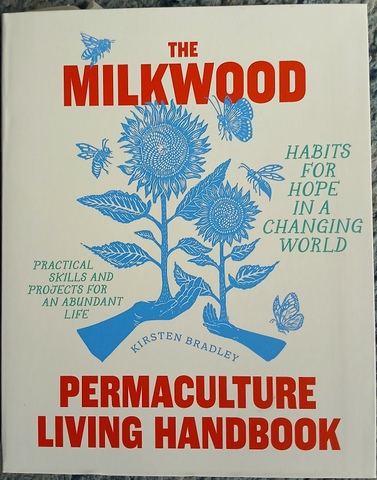
Teaming with Microbes – Jeff Lowenfels & Wayne Lewis – Timber Press (US) 2010 ISBN 978 1 60469 113 9 – If you are interested in soil, You Need This Book! It summarises the scientific research of the last 15 years or so (prior to the writing of the book) on the importance of the soil biota (soil life) and how it is crucial to the plants we grow. The first half of the book covers the different types of life in the soil and their impact on the soil. The second half talks about how you can apply soil web science to your soil and plants to get the best outcome. There is even a cheat sheet at the back summarising the important points in applying the science, but it is worth reading cover to cover and is a great read. Lots of colour photos and line drawings. Back in the ‘80s I did the Farm Tech Certificate and a part of that (obviously) was a subject on soil, but there was absolutely no mention of soil biota, this book opened my eyes to the importance of soil biota and what we can do to support it.
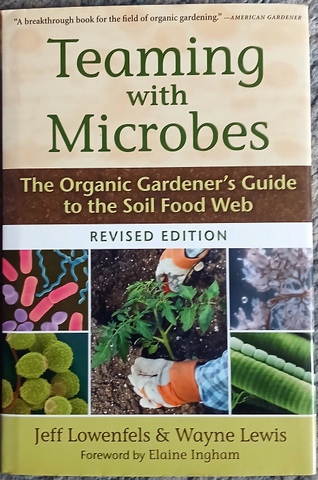
Milkwood – Kirsten Bradley & Nick Ritar – Murdoch Books (AUS) 2018 ISBN 978 74336 411 6 – This book is split up into five chapters – The tomato; mushroom cultivation; natural beekeeping; seaweed and wild food. While they are all great, lots of good info, projects and an abundance of line drawings and colour photos, it was the one on mushroom cultivation and inspired me! While I had been interested in the concept of cultivating mushrooms, particularly from scratch, my one go at it many years ago was a dismal failure. Reading through this book gave me the information I needed and confidence to give it a go. If you want to know how it all worked out, the story can be found here.

Costa’s World – Costa Georgiadis – Harper Collins Publishers (AUS) 2021 ISBN 978 0 7333 3999 8 – This is another of those books that contain so much information, they are difficult to summarise, but there is one thing that is a theme throughout the book, and that is its steady focus on practicality. There is also a focus on living more sustainably where you live, rather than heading bush some time in the future, there is a lot you can do now, and Costa tells you how! He talks about sustainability beginning in the garden, the importance of biodiversity and how to build community, so many subjects dear to my heart as well as permaculture, chooks and small space food growing. This book has inspired me in so many ways.

The Transition Handbook – Rob Hopkins – Green Books Ltd (UK) 2008 ISBN 978 1 900322 18 8 – Yes, I know this is the UK version, and there is an AUS/NZ version, which I also have, but this is the original one I bought when we were in the UK 15+ years ago. It introduced me to some of the issues we were facing such as peak oil, but also showed me a way forward, and the importance of developing community locally to help us through trying times in the future. I did become part of a ‘big picture’ (and not so local) transition group for a while, about the time I also joined a permaculture group but the meetings in Sydney were difficult to attend so I moved to a more local Transition Group while still attending the permaculture meetings. I eventually concluded that with full time work, a family, a permaculture group and a transition group I was spreading myself too thinly, so I decided to focus on permaculture. That does not diminish the impact this book had and my understanding of both the problems we face and potential solutions.
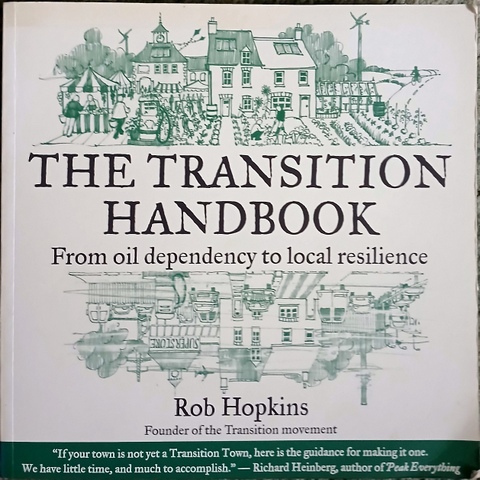
Points that I ponder
In some ways we live in amazing times, certainly when thinking about the availability of books. Back in the day, if a book you were looking for had gone out of print all you could do is scour the second hand bookshops (of which there were many) in the hope of finding it. These days even the oldest book on this list (Wind and Wind Spinners 1974) is available through the internet from multiple sources.
On looking back through the list, I find it fascinating that out of the 2600 books in my library that could have been on this list, of the fifteen books that actually made it, one third are directly related to permaculture and most of the rest have some relation to permaculture principles. Just sayin’!


